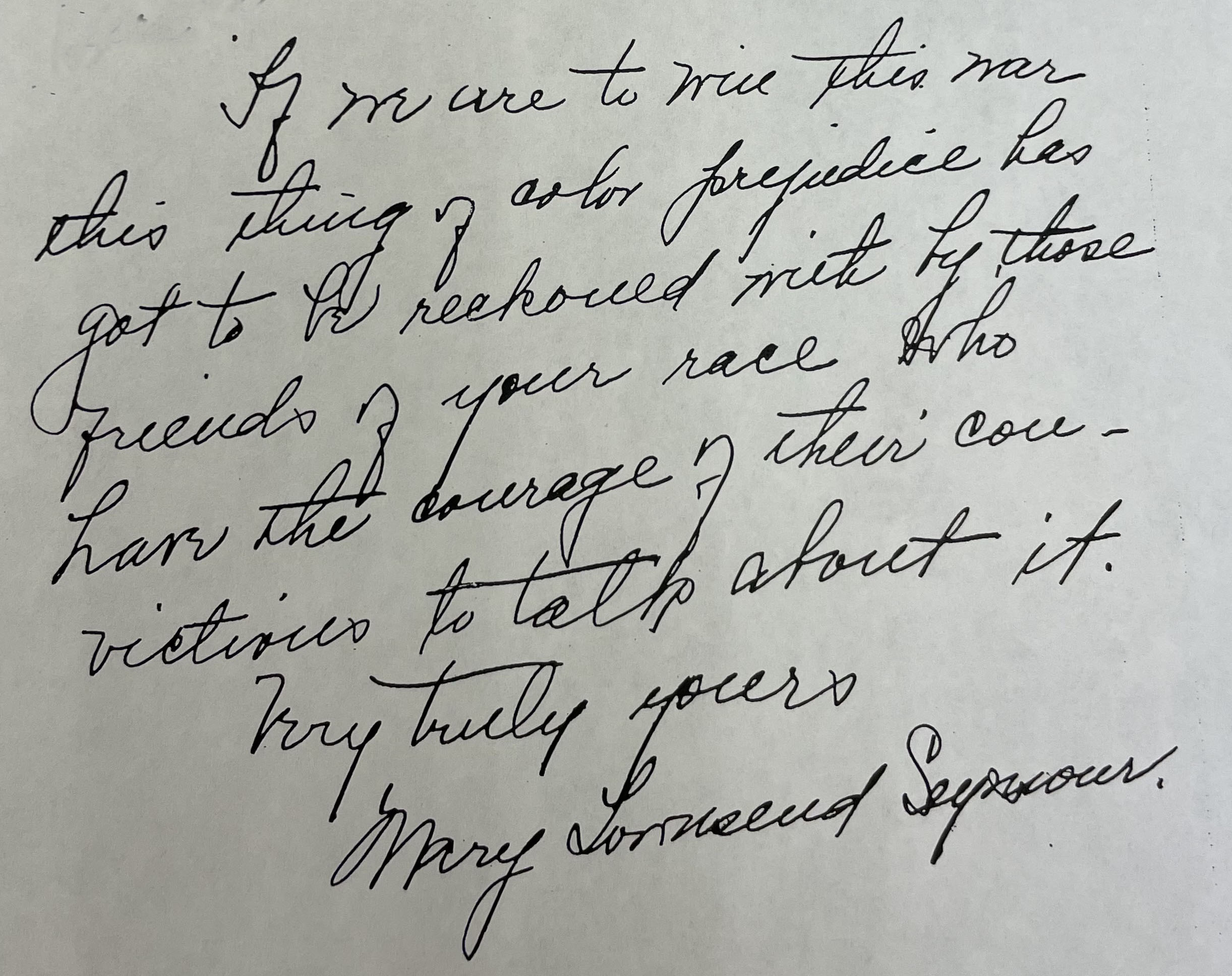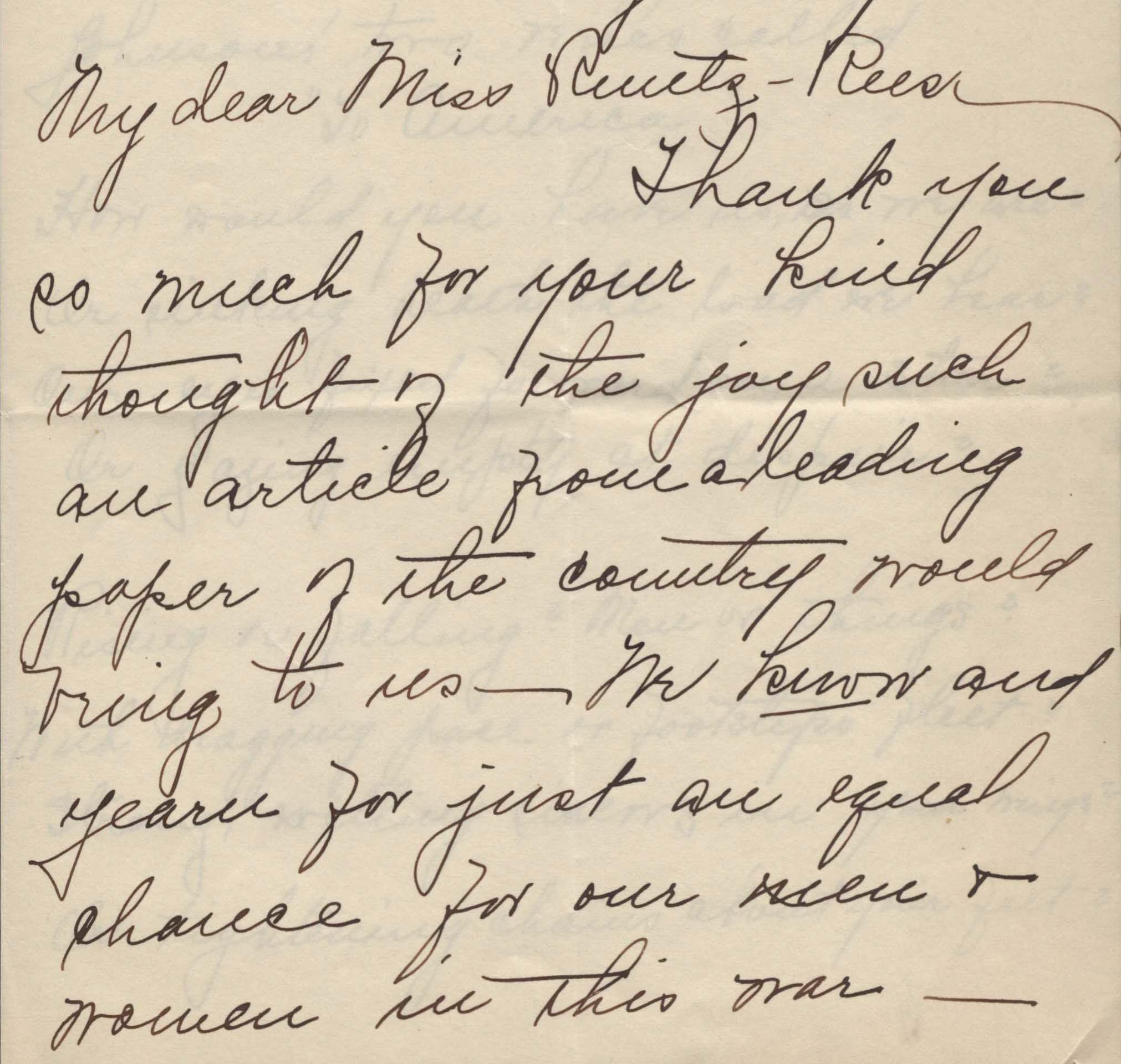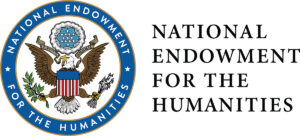Allison Norrie
Fairfield Public Schools
TEACHER'S SNAPSHOT
Subjects:
African Americans, Civil Rights, Military Service, Progressive Era, Race, Social Justice, World War I
Course Topics/Big Ideas:
Cultural Diversity and an American National Identity, Gender Roles in Economic, Political, and Social Life, Role of Connecticut in U.S. History, The Struggle for Freedom, Equality, and Social Justice
Town:
Hartford
Grade:
High School
Lesson Plan Notes
Born in Hartford in 1873, Mary Townsend Seymour was one of the most successful activists of the Progressive Era in Connecticut. Seymour was involved in a variety of causes and campaigns: she worked for women’s suffrage, spoke out against lynchings, and went “undercover” to report on unfair treatment of black women working in tobacco warehouses in Connecticut.
In 1917, Seymour helped start the Hartford chapter of the National Association for the Advancement of Colored People (NAACP). Through the chapter, Seymour and her allies were able to organize and operate many structures of the early civil rights movement. Seymour also used her connections from the suffrage movement to gain support from other prominent women leaders in Hartford, such as Josephine Bennett and Katharine Houghton Hepburn.
Seymour was particularly interested in combatting the discrimination faced by black soldiers during World War I. Seymour publicly called out The Hartford Courant for their use of racist language in describing black soldiers. She also worked with Caroline Ruutz-Rees, a member of the Connecticut Council of Defense, to help end the use of racially charged language and discriminatory practices statewide.
ESSENTIAL QUESTION
SUPPORTING QUESTIONS
- In what ways do the actions of Mary Townsend Seymour reflect the values of the Progressive Era in the United States?
- What arguments in favor of equity does Mary Townsend Seymour make in her letters?
- Why is language important?
ACTIVITY
- Introduce the compelling question that will guide the inquiry.
- Students will watch the short video on primary source analysis from the Library of Congress.
- Students will break out into 3 groups and pre-read the Library of Congress Primary Source Analysis Tool worksheet. Students will then discuss the elements necessary when looking at a primary source. Each group will be responsible for “sharing out” one element of the Tool (assigned by teacher).
- In their small groups, students will read Mary Townsend Seymour’s letters to Caroline Ruutz-Rees, as well as the letter to the editor of the Courant and the newspaper’s editorial response. Groups will fill out a separate LOC organizer worksheet for each source.
- Groups will then “share out” their findings for their assigned portion of the organizer. If the classroom/school environment allows, this activity can also function as a jigsaw. In this scenario, one student from each group switches out to another group and these “representatives” share their findings. Please see The Jigsaw Classroom for further details: www.jigsaw.org.
- As a class, discuss questions that arose during students’ examination of the sources and strategies/sources that could be used to discover answers. Revisit the compelling question.
OPPORTUNITIES FOR ASSESSMENT
- Students will write letters to a legislator, newspaper editor, or activist asking for change. As part of this, students can also engage in peer editing and writing workshops.
- Students will research local and community organizations that tackle contemporary issues. Students can offer support, start a club in school, volunteer, etc.
RESOURCE TOOL KIT

Seymour, Mary Townsend to Caroline Ruutz-Rees, May 22, 1918. Record Group 30, Connecticut State Council of Defense, Box 170, Americanization Department, “H. H. Wheaton,” Connecticut State Library, State Archives.

Seymour, Mary Townsend to Caroline Ruutz-Rees, May 23, 1918. Record Group 30, Connecticut State Council of Defense, Box 170, Americanization Department, “H. H. Wheaton,” Connecticut State Library, State Archives.
“Our Negro Troops: A Correspondent Objects to a Recent Letter” and Editorial response. The Hartford Courant, July 2, 1918, page 12. ProQuest Historical Newspapers.

Library of Congress Primary Source Analysis Tool worksheet
ADDITIONAL RESOURCES
Places to GO
Connecticut Museum of Culture and History, Hartford
Connecticut State Library, Hartford
Things To DO
Watch the “Mary Townsend Seymour Tribute Film” from the Connecticut Women’s Hall of Fame (7:37).
Explore The Work Must Be Done: Women of Color and the Right to Vote from the Connecticut Museum of Culture and History.
Websites to VISIT
Articles to READ
Jones, Mark H. “Audacious Alliance: Mary Townsend Seymour.” Connecticut Explored. Summer 2003.
“Mary Townsend Seymour.” The Work Must Be Done: Women of Color and the Right to Vote. Connecticut Museum of Culture and History.
“January 12: Mary Townsend Seymour, Civil Rights Champion.” Today in Connecticut History. Office of the State Historian.



